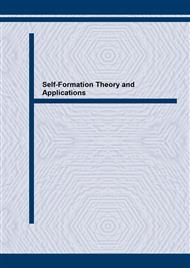p.3
p.11
p.21
p.27
p.37
p.43
p.51
p.59
From Self-Organization to Evolution of RNA Molecules: The Origin of Biological Information
Abstract:
Autocatalytic chemical reactions may lead to spatio-temporal patterns if processed under non-equilibrium conditions. The patterns disappear when the conditions change and information stored in these non-equilibrium structures is lost since precise reconstructions are impossible. Replication of molecules, in particular of polynucleotides RNA or DNA, is an autocatalytic process too. The storage of information in polynucleotide sequences, however, allows for reconstruction of the molecules under suitable conditions. Conservation of information in polymer sequences constitutes the basic difference between chemical and biological self-organization. Evolution of RNA molecules is considered as pattern formation in sequence space, which manifests itself as another pattern in the space of minimum-free-energy structures. In addition, optimization of RNA structures and properties is visualized as an evolutionary trial-and-error process. This process can be interpreted as a simple form of learning at the level of ensembles or populations of molecules. Evolutionary optimization of RNA molecules occurs in steps: Short adaptive periods are interrupted by long epochs of quasi-stationarity during which the mean replication rate of the populations is essentially constant. Understanding of evolution is largely facilitated through consideration of sequence-structure relation as a many-to-one or non-invertible mapping from sequence space into structure space. Neutrality of sequences with respect to structure formation is highly relevant for evolutionary optimization on rugged fitness landscapes.
Info:
Periodical:
Pages:
27-36
Citation:
Online since:
April 2004
Authors:
Keywords:
Price:
Сopyright:
© 2004 Trans Tech Publications Ltd. All Rights Reserved
Share:
Citation:


